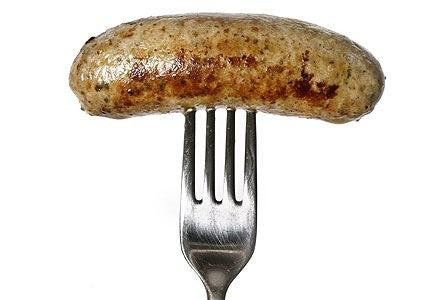

The sausage is a seemingly simple food, but it has a deep history and is a complex interplay of meat, fat, and flavour.
Sausages are one of the oldest-known forms of processed foods known to humanity. The word sausage stems from the mid-15th century English sawsyge, from Old North French saussiche, from Vulgar Latin's salsica "sausage", from salsicus "seasoned with salt", originating from the Latin word salsus meaning "salted". (1)
While the roots of the word can be traced, the exact origins of sausages will likely never be known due to the limitations of recorded history, but it likely began as a way to economise and preserve meat. Almost any animal's meat can be used to make sausages, but the main ingredients in early sausages were probably parts of the animal's carcass that could not be consumed fresh after slaughter or would turn rancid quickly without further processing for preservation, such as organ meats or blood. (2)
Sausages now come in nearly infinite variations and may be sold raw and eaten freshly cooked; they may be fermented; air-dried, cooked and/or smoked to varying degrees in order to be kept for a few days or indefinitely. (4)
Though there is great variation, the sausage's origin as a method of preservation helps us understand the reasoning of ingredients that are crucial in defining the variations and unique styles of sausage making. While some may associate the ingredients of fat, rusk, or the additions of curing agents to be signs of a poorly-made sausage, it is not necessarily so. For example:
-
Just because a sausage contains a higher meat content does not make it a better sausage. The traditional British method of adding bread (rusk) was originally used to stretch the pork and make more sausages. But the addition of rusk also helps the sausage to retain its pleasing moisture during the cooking process and is what gives the traditional, correctly made British sausage its uniquely light texture. (3)
-
Fresh sausages are unfermented and uncooked and, therefore, highly perishable. Curing agents and preservatives (salt, sodium nitrite, sodium nitrate, etc.) are necessary for these sausages due to the highly perishable nature of the ingredients. These ingredients halt the growth of harmful bacteria ensuring the sausages remain wholesome for us to enjoy.
-
The correct pH is important in inhibiting bacterial growth, ensuring the sausage remains fresh and delicious. As well as helping inhibit bacterial growth, the addition of ascorbic acid (vitamin C) or other acidity regulators help give some sausages their mouth-watering tang.
Originating out of necessity, sausage making has evolved, improved, and has been refined into a respected culinary art with delicious results. Many countries have developed their own unique sausage-making traditions with even more diverse and distinct regional variations. But, regardless of the type of sausage being made, a common view among sausage makers that take their craft seriously is that good quality meat from animals that have been raised ethically and with high welfare standards will translate into a better sausage. These craftsmen and craftswoman also understand that their sausages are not a way to utilise the "odd-bits". Carefully selected cuts of meat, blended together with the proper ratios of fat, curing agent, rusk, and seasonings create a modern sausage that can be truly enjoyed.
(2) Marchello, M. & Garden-Robinson, J., 2012. The Art and Practice of Sausage Making. Fargo: NDSU Extension Service.
(3) Lishman, D., 2012. What makes a British sausage British? [Online] Available at: http://www.davidlishman.com/what-makes-a-british-sausage-british/ [Accessed 29 July 2015].
(4) McGee, Harold 2004. On Food and Cooking: The Science and Lore of The Kitchen.New York: Scribner.

